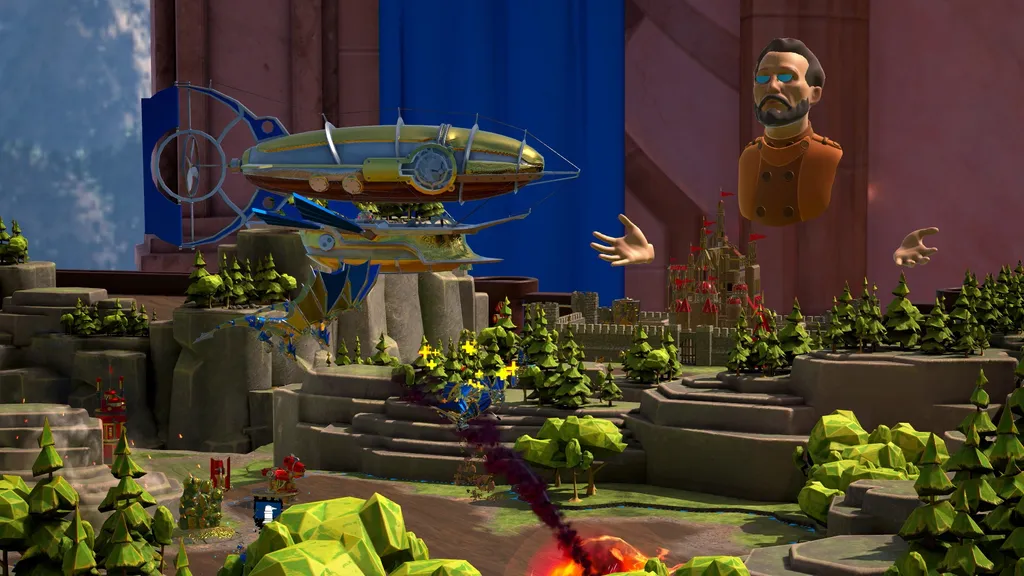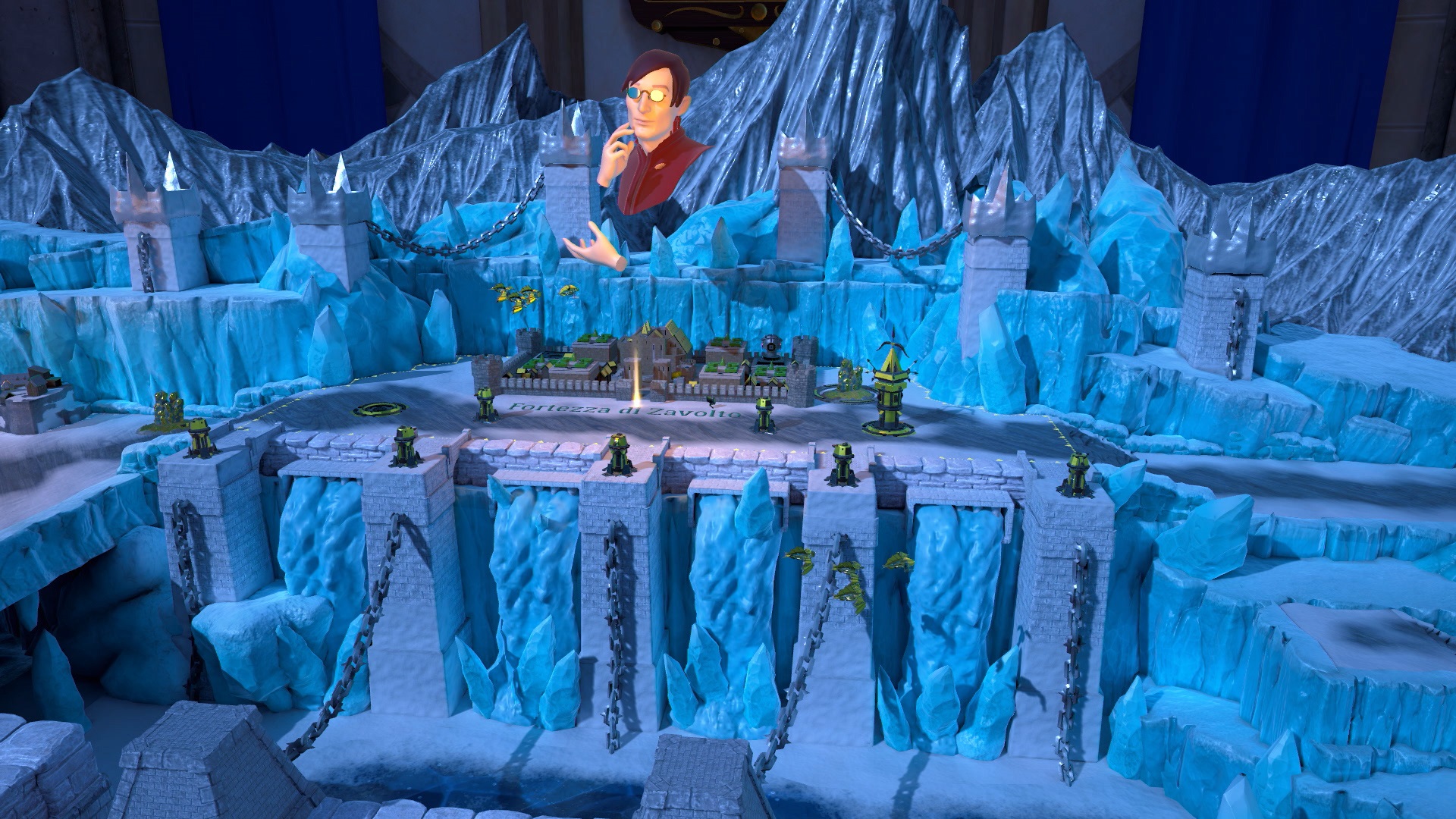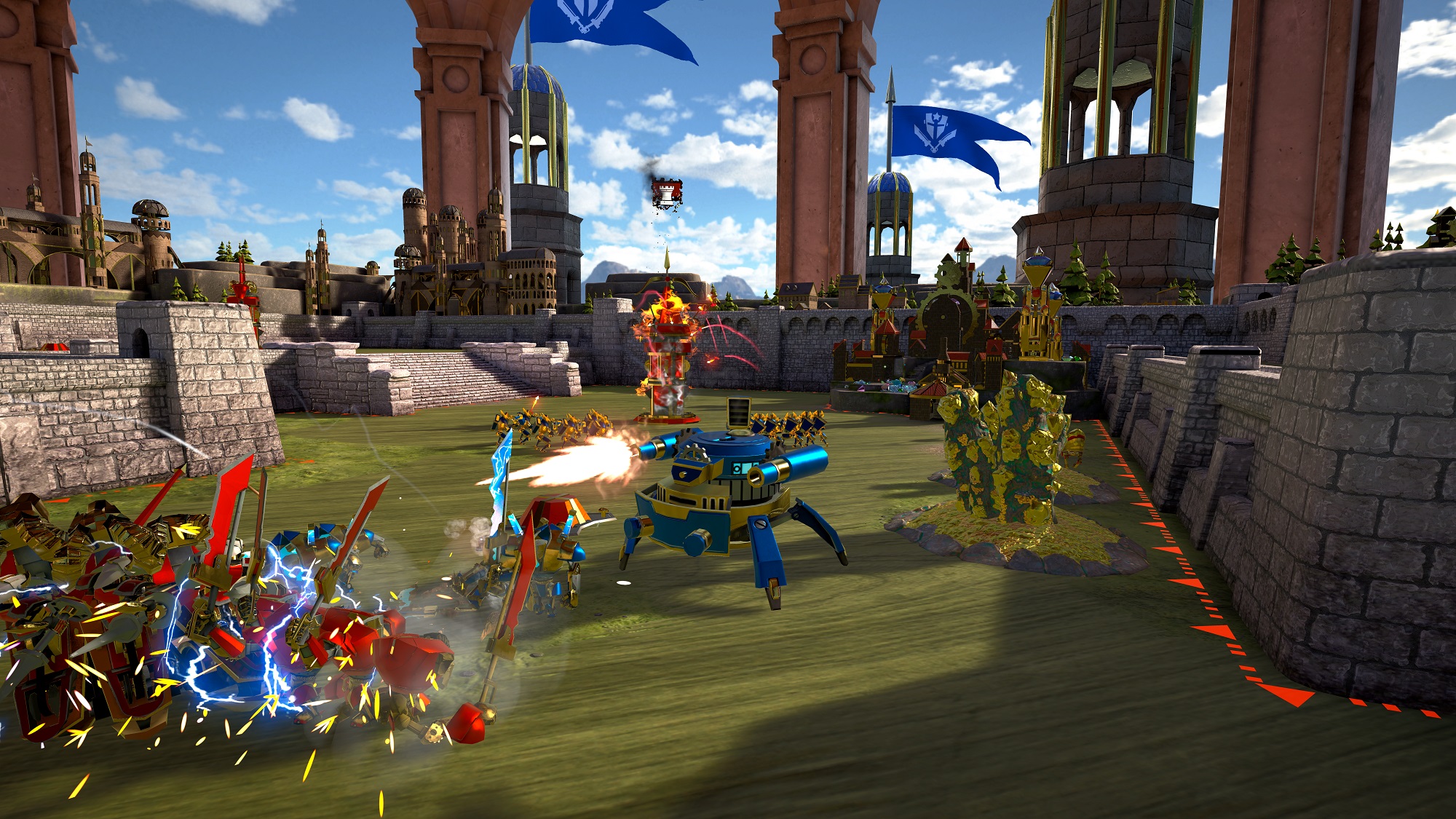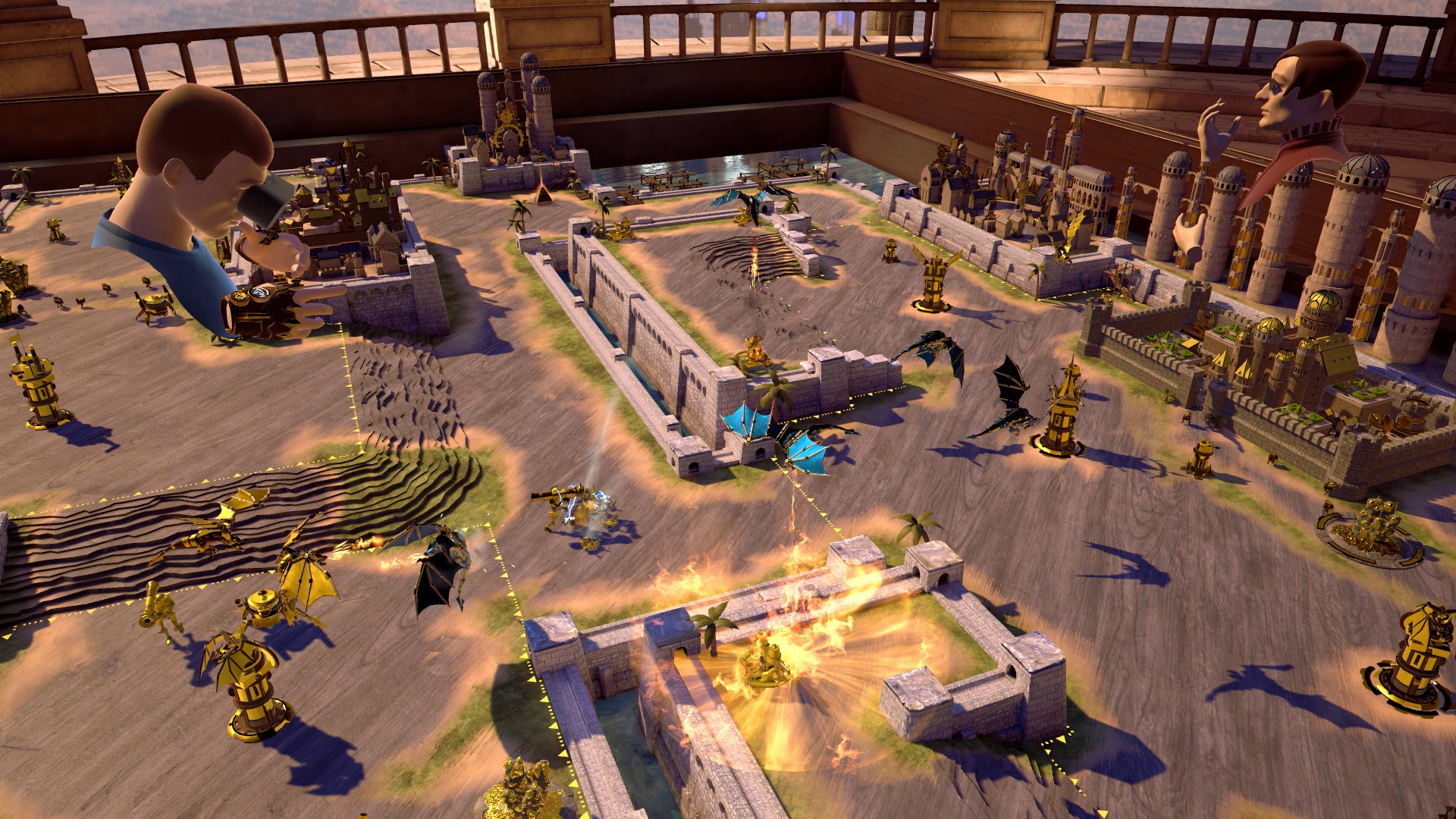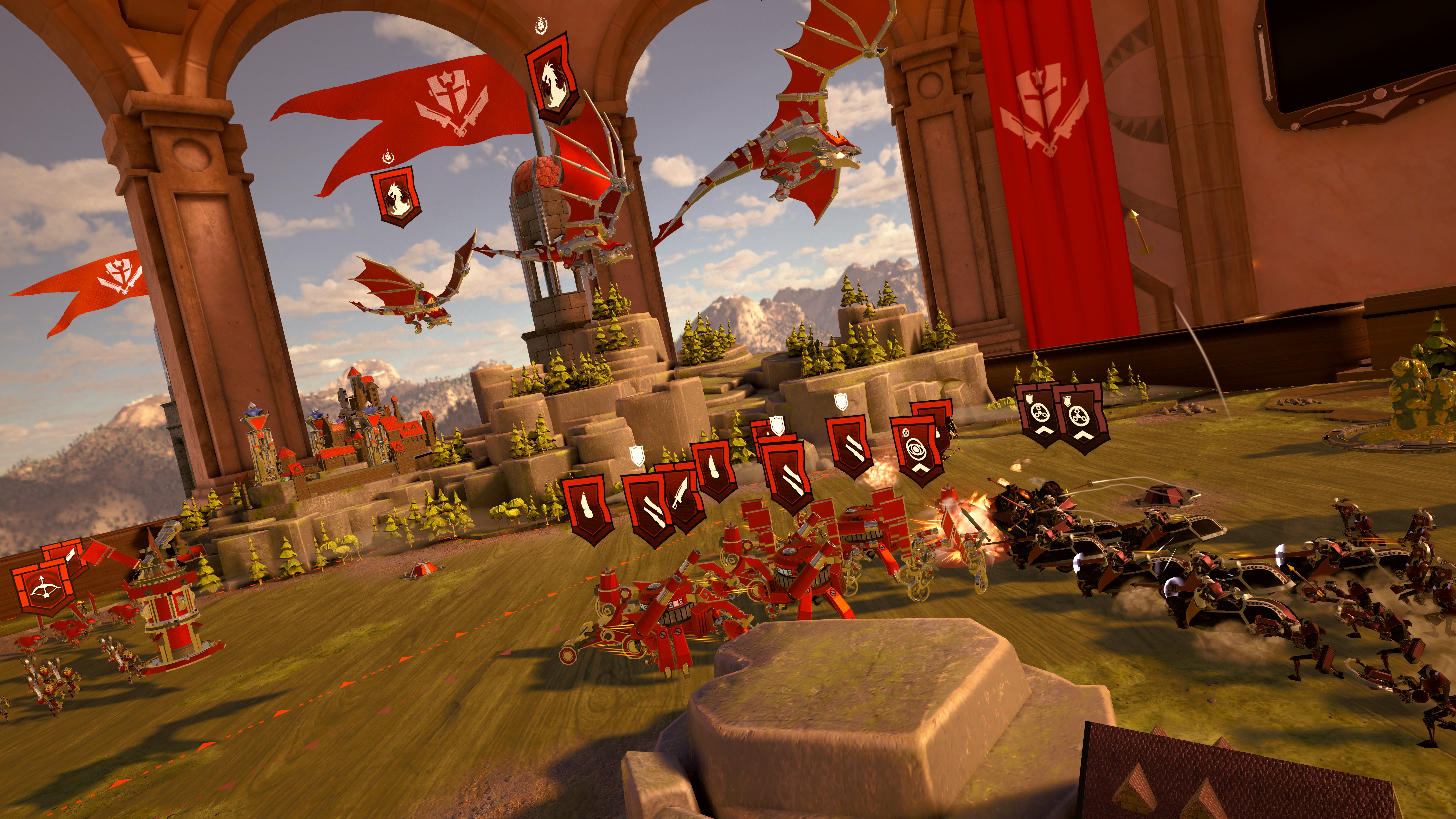When the Oculus Rift first launched back in 2016 there was a little game named AirMech Command. It was quite good for the time, especially considering it was played with just a gamepad initially, and it let us experience a more immersive way to play a top-down view game as if we were a General in the sky. Eventually it got hand controller support and it’s still quite solid, but in hindsight it never truly takes full advantage of the medium.
Now we’ve got Brass Tactics from Hidden Path Entertainment. We first played the game at GDC last year, saw a follow-up demo a few months later, and just got our hands on the free-to-play Arena mode variant last week, but now with the full release right around the corner we can confidently say that Brass Tactics may very well be the best RTS we’ve seen in VR yet. What Landfall does for real-time tactics based action games, Brass Tactics does for the RTS market in VR.
For fans of the genre, it’s got just about everything you’d want. The unique steampunk setting serves as a backdrop for a surprisingly solid campaign that boasts approximately 4-6 hours of content. Across the whole game you’ll find over 20 different highly-detailed and varied maps, multiple armies to choose from with branching unit upgrade paths, and a mixture of both cooperative and competitive multiplayer.
Before Brass Tactics, it seemed like VR RTS games would try to boil down the experience as much as possible to ratchet up the “interaction” but scale down the “features” so it became more of a MOBA than a true-to-form RTS. Recent examples like League of War and Skyworld both fall into that category. But Brass Tactics manages to retain the depth and complexity the genre is known for.
Each match generally starts the same with opponents beginning at opposite ends of the map floating as Oculus avatars near their home base castle. Small gathering units scavenge for crystals and gold, the main resources in Brass Tactics, which can be used to build structures, spawn units, and upgrade your kingdom.
Throughout the map are circular nodes that can be captured by placing a unit nearby and once captured you can reach over to place a summoning tower. Once the tower is built, this is how you spawn new units. This is a clever mechanic because it means turtling up and clustering all of your structures together back at your home base isn’t an option — you’re forced to stretch out into the game world to create units and expand your forces. Stretching yourself too thin is a very real and likely scenario.
Each new region you unlock nets you more resource gatherers as well, so the more towers you have the more resources you’re gathering per minute, which means you can build more units more quickly. It’s a very satisfying gameplay loop and really incentivizes you to be flexible across the map.
The way you actually move around the map itself is really creative. By placing your hands on the table, which feels like a giant tabletop game board, you can drag yourself across it or raise and lower it for a better viewing angle. Once you get the hang of it you can slide across the map with a flick of the wrist to quickly access forgotten corners.
Since your avatar is floating over the map from the very start this means that there is no fog of war, which is usually a staple of RTS games. Instead, the developers at Hidden Path have informally coined a term we heard them use dubbed the “fog of attention” which is a uniquely VR thing. The map is always visible at all times, but because of how immersive and involved the game becomes, you end up forgetting about the areas not immediately in front of you — hence fogging up your “attention” span instead.
Each map has a very distinct personality in and of itself, requiring different strategies. Some are very straight-forward with open areas aching for battles to play out, while others are more segmented and varied. Matches usually take around 20 minutes or so, give or take, but the end-game can play out very slowly if two sides are evenly matched. When you’ve got siege tanks and dragons and forces of a half-dozen heavily armored rocketeeers duking it out in a climactic final battle things can get very, very epic very quickly.
The biggest missing piece of the experience as compared to other modern RTS games is that the units themselves lack a bit of the nuance you might be looking for. You can upgrade your units individually back at your main base, but when actually using them you won’t be able to use different weapons, take cover, set traps, or other things that more tactically-designed RTS games let you do. And the lack of “real” base building eliminates some of the personalization so each match ends up feeling vaguely the same for the most part.
The campaign is much more robust than I expected, but it’s not the reason why people should buy this game. It’s a great introductory experience, but the multiplayer is where this one really sings. Playing competitively is just excellent. Since you can visibly see your enemy’s avatar scanning around the map you can tell precisely where they’re attention is occupied which makes flanking much more exciting and head-to-head skirmishes become way more intense this way as well.
Cooperative multiplayer is great fun too if you’d rather work together, but I’ve got a feeling the competitive mode is what’s going to help this one really stand out from the pack.
Brass Tactics is a big step forward for RTS games in VR. The tactile feeling of picking up, directing, and interacting with units using your own hands is excellent and the mixture of single player, as well as both cooperative and competitive multiplayer, all adds up to one of the most feature-rich strategy games we’ve seen yet. It lacks some of the depth and complexity of its modern non-VR counterparts, but you’d be hard-pressed to find a more competent and engaging RTS in VR right now.
Brass Tactics is now available on Oculus Home for Oculus Rift. Read our Game Review Guidelines for more information on how we arrived at this score.

